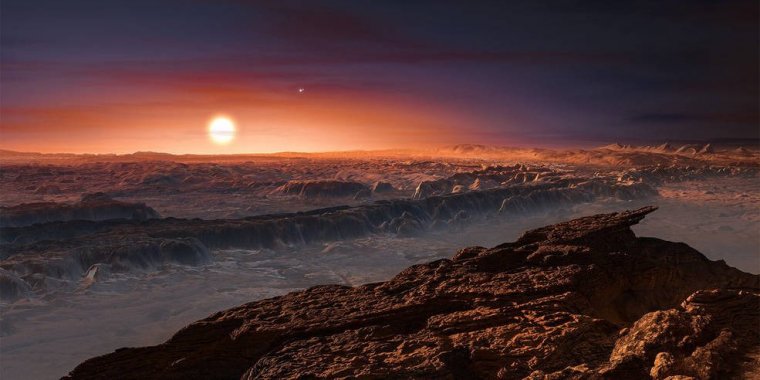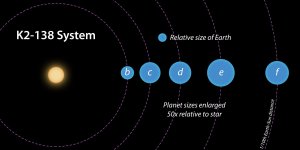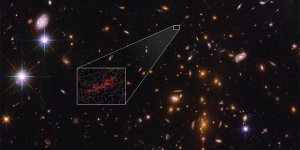| News / Space News |
Planet Orbiting Nearest Star Could be Habitable
A rocky extrasolar planet with a mass similar to Earth’s was recently detected around Proxima Centauri, the nearest star to our sun. This planet, called Proxima b, is in an orbit that would allow it to have liquid water on its surface, thus raising the question of its habitability.

Artist impression of the surface of the planet Proxima b orbiting the red dwarf star Proxima Centauri, the closest star to the solar system. ![]()
An international team led by researchers at the Marseille Astrophysics Laboratory (CNRS/Aix-Marseille Université) has determined the planet’s dimensions and properties of its surface, which actually favor its habitability.
The team says Proxima b could be an "ocean planet," with an ocean covering its entire surface, the water perhaps similar to that of subsurface oceans detected inside icy moons around Jupiter and Saturn.
The researchers also show that Proxima b’s composition might resemble Mercury’s, with a metal core making up two-thirds of the mass of the planet. These results provide the basis for future studies to determine the habitability of Proxima b. (NASA)
YOU MAY ALSO LIKE


